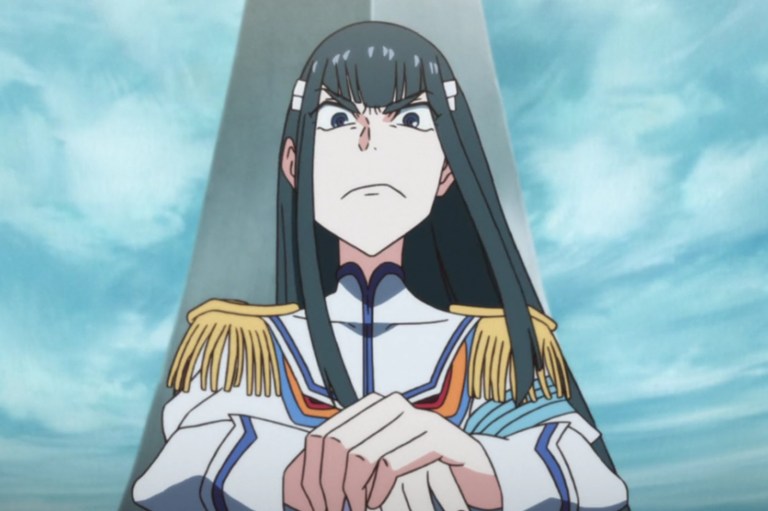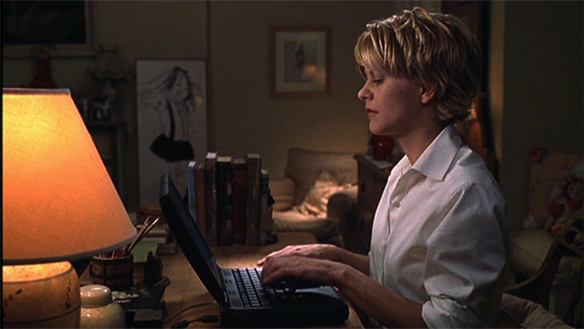
This Is Your 30 Day Healing Challenge—It’s Time To Move On And Let Go For Good
To be adapted and repeated for as long and as often as needed. It’s your journey – how you take it is entirely up to you.
Day 1: Name Your Pain
Take your time with that one, and be extremely specific. Don’t worry if you have to start a few times over if you have to tear out pages and cover them with ink blotches and arrows. The main point is to have your story out, for you to have a name for what causes you anguish. “The thing that happened in high school” is too big and nebulous to move on from; “letting go of the voices of my bullies”, on the other hand, is something to work with.
Day 2: Set Your Intentions
Try to whittle it down to a single sentence, but if you need more space, that’s fine too. At this point, you’ve been living with this pain enough to be sick of it. You know that letting go of it will have a positive impact on your life. Write down what it is that you want to let go of and why, then stick it somewhere you will see it every day: Your fridge, your night table, the front cover of your journal; set it as your desktop, your screensaver, set an automatic email to come to you every morning, whatever works. Just make sure you have a regular reminder of why you’re doing this and what you are letting go of.
Day 3-5: Take Stock
There’s probably a tonne of things in your life that remind you of whatever it is you’re trying to move on from. Some of it may be obvious – here’s that knick-knack she got me, or this picture from a tournament he took me to – some of it may be less so, like how hard you work to please everyone. Reminders of a person, or an event, may come tumbling in front of you like dusty candy in a coat pocket for weeks to come – what’s important now is to figure out where the bulk of it is. Think of it as a scavenger hunt, and make a list of all the reminders in your life – take a few days to comb through your house, your car, and finally, your habits, and locate those dusty candies so that you’re ready for the next step.
Day 6: Enlist Help
Find your meanest friend – the one who liked him the least, or the one who told you she did not deserve you – and tell them what you’re doing. Be specific – use your script from day 2 if you have to. “I’m on a mission to reclaim my (head)space so that I can finally direct my energies onto healing. Will you help?” You don’t have to scream it from the rooftops or round up your whole coterie – at this stage, you need only one or two people. What is important is this: They need to love you, and they need to be merciless.
Day 7-8: Purge Your Physical Space
If there was ever a perfect excuse to do the full Marie Kondo, this is it. Have your mean friends on hand, put on some appropriate music (fun fact: according to Bruce Dickinson’s biography, Iron Maiden never released a proper love song) and then let the recycling extravaganza begin. If you can’t bring yourself to throw physical mementos away, stick them in a box for your friends to store (where you have no access), or put it in a donations bin. Don’t let yourself ruminate – the only questions you need to ask are: “Can this be used by another human being?” And, occasionally, “Would I need this in the future?” (Think Legal documents and professional qualifications.) Your friends will help give you a reality check – you don’t need to throw away a teddy bear if someone else can use it, but you equally don’t need to shred your Masters Degree if it reminds you of your controlling relative.
Day 9: The Dust Bunnies Will Run For Their Lives
Fact: tidying up makes a mess. Take this time to clean up your home, launder your clothes, scrub the toilet, banish the old spices from your cupboards, the works. Can you do that the previous two days? Sure. But I would advise against it. Firstly, your friends came to banish the ghosts from your head, not the grease stains from the kitchen, which is arguably not as fun. Secondly, being alone in a newly tidied house can make you antsy. No better way to get rid of that extra energy than to dust every nook and cranny of your home, and sending the dust bunnies running.
Day 10: Make Two Lists
Grab a piece of paper. On one side, write down a list of “Things that drove you up the wall about (the thing you want to move on from)”. On the other, write a bunch of thoughts, people, and activities that you liked, and that the person you’re healing after would absolutely DESPISE. Pick three things from the second list and research the ones nearest to you. What are they about? How much effort would they require? How much do they cost?
Day 11: Make A Plan
Pick one of the three things you researched the previous day and make a plan to do it within the week. Commit to it – pick up the phone, put down the card detail, ask your mean friend to take you there under pain of social media roasting. Be mindful of your budget, of course, as well as how much energy you can spare after work and helping your loved ones. But also, you need new passions in your life. If you feel hesitant, remember the first list you made yesterday, and remember that this is something purely for you.
Day 12-14: Adulting Stuff
Chances are if your mind and soul is hurting, your body wasn’t doing too great either. Are you getting enough sleep? Are you eating food that you find delicious? Have you got the bills and budget down pat, so that you don’t have to scramble to pay anything at the end of the month? Run through those things while you’re still on a high from doing the thing the person who hurt you would hate so that you can tick off all you procrastinate over. Dentist checks? Doctor checks? Nobody loves them, but get them done as much as possible now so that you can have 12 months of not having to worry about it.
Day 15: Forecast Of An Emotional Storm
It’s been two weeks since the challenge started, and you’ve accomplished so much! You wanna pat yourself on the back, except… your dentist found a cavity, or you pap smear was due, and even though everything went off without a hitch and you are fine now, you’re probably feeling a little bit raw. You can’t find your favorite comfy sweater and you remember it was a gift from That Person, and it just reminds you how kind and comforting they were, and why did you bother in the first place…
You may want to be mean to yourself, or else call the whole project off. What I’d like to invite you to do instead is putting your phone away and letting yourself have a nice, big cry about it. (Or shout and punch a pillow. Or turn up your music and scream along to Lorde. Whatever mood strikes you.) Take as long as you need, until the emotion has spent itself.
Day 16: Read Back Your Intentions
The previous day might have left you with an emotional (and a real) hangover. For recovery, take your story from day 1, and your intention from day 2. Reread both, taking your time to let the words sink in. Notice the anguish in your voice, the difficulty in writing the words. Cry a bit again, if you have to.
Here’s the tea: chances are, it was not all that bad. It’s human to feel sad, to remember the good times, to wonder if you weren’t the one in the wrong after all. Times like these, it’s okay to feel sad; but it’s also important to remember exactly why you needed to get away, to let go, and to heal. Specificity helps us parse out the good from the bad; it lets us acknowledge the happy times existed AS WELL as the bad ones. It’s not either/or: it was both, and the bad stuff made you want to leave.
Day 17: Make Another List
Write out a list of your achievements. Then write out a list of reasons why you, objectively, achieved them. Think: Master’s Degree – you worked hard, you did your research, you were passionate about the subject, you helped others, etc. Don’t be tempted to editorialize, aka “I only got it because the teacher liked me”. You got it because you worked for it. Make a list and put it near your intentions from Day 2, so that whenever you want to call yourself lazy or stupid, you’ve got a rebuke right there, on your eye level.
Day 18-20: Start Habits That Make You Happy
Remember that activity you tried earlier? On day 11 even? Did you like it? Did you want to do it again? If not, what would you like to do instead? What would make you excited to get out of bed in the morning? Starting new habits, hobbies, or re-focusing your energy on things that you were passionate about but let go of; these are all ways for you to remind yourself of your own power.
Day 21: Check In With Your Friends
Your mean friends may want to get rid of the stuff they stored for you, but they likely won’t until you say so. Have a nice catch-up, a roast, or just a day/night out with friends. Check in with yourself after that night is over – how do you feel now that you’re starting new things and looking after your body? How does spending time with your people feel like? Do you want to do more?
Day 22-23: Rescind Your Invitation To Emotional Vampires
By now, you’re probably seeing glimpses of your old self. Depending on how much time has passed, you’re either taking baby steps forward, or you are repeating self-healing steps that helped you in the past, and you are coming into your superpowers. Time to examine your friend group: Who are your allies in your quest for healing? Who are suddenly disinterested in you, now that you’re no longer miserable? Are they happy to see you improve, or are they forcing you to remember bad times?
In the past, you may have held onto the wishy-washy and the jerks because you had no-one else. Or, maybe they were just okay, but now you see you just hang out because of habit. Either way – there’s no harm in seeing people you like one-to-one, and “losing” the numbers of those you don’t.
Day 24: Cloudy With A Chance Of Boredom
Most self-healing is done quietly, alongside your daily life. You go to work, you come home. You fix the same food you always have, do the same things to unwind. Once the drama of the initial few days has settled and you have made self-asserting boundaries part of daily practice, you’ll find life becoming routine… even boring.
Remember: boredom is good. Boredom means the worst of your worries can be taken care of later, and that you are no longer living in a constant state of crisis. Yes, it’s not nearly as exciting, but it’s also self-protective and self-loving.
Day 25: Brace Yourself For A Surprise Storm
Remember those dust candies tumbling out of pockets? Or those emotional vampires you just banished? There’s a chance a few of them might pop out: a song comes onto your playlist that you forgot to purge, or some “friend” lets your ex have your new phone “accidentally”. Have your mean friends’ on speed dial, or plan for a few extra new and exciting things to do. Or clean up your house again, or run one more mile… whatever works to keep you occupied until the urge to call back has passed. Check-in with your intentions if you have to.
Day 26: Acknowledge You Got Through
So you survived the storm. Even if you gave in and returned the call, met the person for a drink, ate whatever shit they served you… you’re here. You may be rattled, but you got through. Meanwhile, if you didn’t give in, you may be wondering if it was a fluke. Pat yourself in the back either way. Your worst nightmare may be to return to the bad situation, but as long as you are here today, there is hope. Remind yourself that you are human, apologize if you have to, and resolve to keep doing the right thing. Next time, you’ll know better.
Day 27: Two Final Lists For You
Remember how tempted you were to ruminate about Those Good Times? Now you have a chance to – write down all the good about the person and the situation, or what you perceived to be good about it. Be specific. Once that’s done, turn the page. List out all the good that wasn’t there, but that you wanted to have, that you wish you can have. Take as long as you need, and be as extravagant as you want.
The first list is what you got out of the bad situation, the stuff that kept you stuck. The second list is what you want, what you could have ON TOP of the good stuff from before… but without all the bad.
Day 28: Allow A Private Moment Of Grace
Maybe you’re still feeling dubious or rattled. Maybe you think that your perception of the situation was wrong, or at the very least you need to acknowledge the good that the other person did for you. This day is your permission to do it – in PRIVATE.
Write a letter, listing out all those good things the other person did, and thank them for the ones they genuinely, honestly did to help you. What this means is, don’t thank them for every gift that came with strings, or the stuff that they did because it reflected well on them. Don’t thank them for supporting your studies if they constantly rubbed it in your face, or for raising your kids if they used that as a justification to cheat.
Thank them for the true moments of selflessness, for the honesty, for the support. You may still end up with a nice letter, but chances are, it will be a lot shorter than you think. Once you’re done, stick it in a drawer and don’t send it. Like with other times you exerted a special effort, the recipient is likely not to appreciate it as much as you would.
Day 29: Put It All Together
The lists, the letters, the intentions, the story. Put it in one place and look at it as a whole. The “good” list that seems excessive compared to the things that actually merited thanks; the qualities you undermined in yourself, the dreams you set aside while you settled for crumbs; the nonsense you tolerated and that you will not miss. What you have is a roadmap to the future – it’s not foolproof or anything like that, but it’s a start. You know what you want, what you need, what you deserve; what you won’t settle for, what is worthy of gratitude, and what is just a gift with strings attached. Smile. You know yourself better now.
Day 30: Keep Going
Writing your future happens every day. Sometimes you will have to repeat old steps, just to remind yourself of your power. Some things might set you back – that’s okay. The important bit is to keep going, to work hard, and to resolve to always do better.
You’ve got what it takes to move on and heal. Don’t stop.
Don’t ever stop. ![]()











